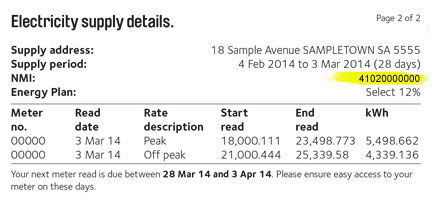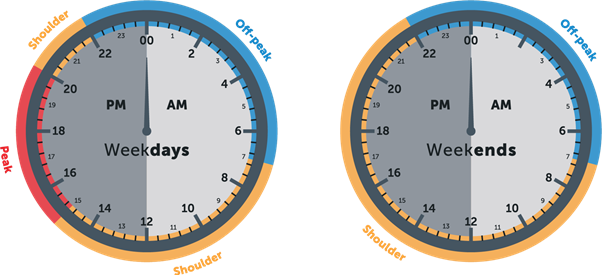Why compare energy deals?
With cost-of-living pressures, it’s a good idea to check if you’re on the best energy deal for your circumstances. Most households and small businesses can save money by switching to a more competitive offer. We recommend you check if you’re on the best offer at least once every year.
Step by Step Comparison Guide
It’s not always easy to understand what energy deals you’re being offered or compare plans between retailers. Here’s a guide to help you through the process.
1. Ask your retailer if you’re on the best deal
Contact your energy provide to ask them if you’re on the best deal for your circumstances. Check out our factsheet for tips on what to ask your retailer.
2. Visit an energy comparison website
There are two government energy comparison websites. You can also call their helpdesk for assistance.
The websites list all the offers available to you from licenced energy retailers. To be listed on the website, the company needs to be an authorised retailer and be registered with the Australian Energy Regulator.
If you’re a small business, you can also use these comparison sites, but you will need your bill details and you need to have been at the premise for 12 months.
| Location | Contact Details |
| NSW, SA, ACT, TAS, or QLD | www.energymadeeasy.gov.au or call 1300 585 165 |
| Victoria | www.compare.energy.vic.au or call 1800 000 832 |
You will need your previous bill as you will be asked to upload it and/or need to refer to it. However, if you don’t have a bill available, or don’t want to upload your data, you can still use these tools based on estimates.
If you’re comparing electricity plans, you will be asked to provide your National Metering Identifier (NMI) – this is the unique number of your electricity meter for your home. You can find this on your bill as highlighted below.
Finding your NMI
Your National Metering Identifier (NMI) is highlighted in yellow.

There are also a range of private businesses that offer price comparison websites. While they compare some offers from some retailers, they do not always include all available offers and do not always feature independent information.
3. Understand what the key factors are to compare
We’ve put together a list of the top things to consider when comparing an energy deal. But if you find it overwhelming, the simplest way to choose is by the overall estimated price per month/quarter/year that the comparison website provides.
Pricing
Your bill is made up of two main components:
- The ‘usage’ rate – how much energy your household consumes.
- The daily ‘supply’ charge – how much you are charged each day for energy to be supplied to your home. This is a fixed charge.
Types of Pricing
Single Rate Tariff
You are charged the same amount for your energy at any time of day, regardless of when it is used. It is normally lower in price than the peak rate of a time-of-use tariff. It might be best for you if it’s hard to change when you use electricity or if you use a lot of electricity in the evening. These can also be called flat rate, standard rate, or anytime rate.
Time-of-Use Tariff
You are charged different rates for your electricity depending on what time of day it is. These are typically divided into three time periods:
- Peak: when electricity costs the most. This normally occurs in the late afternoon and early evening from Monday to Friday.
- Off-peak: when electricity is cheapest. This normally occurs overnight and on the weekend.
- Shoulder: the transitional period between peak and off-peak.

Source: EWOV
This could be a good choice for you if you can easily change when you use electricity to take advantage of the cheaper rates in off-peak and shoulder periods.
You will normally need a smart meter that can measure your electricity use at different times of the day to get a time of use plan. Smart meters measure how much electricity you use and when and then automatically send this to your retailer.
Demand Tariff
Demand tariffs are based on the highest amount of electricity you use during a 30-minute period in your billing cycle. This is then used to calculate how much you pay for that period at the highest rate. This tariff is designed to bill you for the extra ‘demand’ you’re putting on the grid.
A demand tariff can suit some households, particularly if you are able to adjust how you use your electricity, but they are not for everyone. They are not suitable for most ordinary households. If you think you may be on a demand tariff, and you didn’t choose to be, contact your retailer.
Controlled Load Tariff
Controlled load tariffs are applied to a specific appliance such as an electric hot water system, pool pump, or underfloor heating. This is charged on top of your other usage rates and is specific to that appliance. Controlled loads are typically lower as the appliances normally operate during off-peak hours.
Fixed vs Variable Charges
A fixed rate means the amount you are charged won’t change for the period of the contract.
A variable rate means the amount you are charged can change from time to time, normally once per year.
Your retailer needs to notify you five days in advance (or ten days in QLD) of increasing the price of your energy plan in most circumstances.
Fees and Incentives
Sometimes there are additional fees to consider as well. Look closely to see what fees you will be charged so you’re not hit with a nasty surprise. Potential fees could include receiving your bill in the mail, not paying your bill on time, or using a credit card.
Some plans have incentives to encourage you to sign up such as a discount on your bill amount, sign up credit for new customers, or frequent flyer points. Double check if there are specific eligibility requirements to receive these discounts such as paying by direct debit, receiving your bill by email, or being a member of a particular organisation.
Be careful to check how long the discount period lasts for, and how much your bill will increase once the discount period has ended.
4. I still have questions. What can I do?
Contact your retailer – or the retailer whose plan you are interested in – and ask them to provide more information about the plan.
I’ve decided, now what?

Well done on making a decision! To sign up:
• Call or go to the retailer’s website and sign up to your chosen plan. You will be asked questions like how you would like to receive your bill, or whether you have a concession. Your new retailer will do the rest.
• Within a few days you should receive a welcome email or postal information that includes your contract details. You can switch back at no cost within 10 days if you’re not happy.

If you require life support equipment, or are eligible for any government concessions, make sure you let your new retailer know. Find out more about accessing support to help you with your energy bills.

If you are in an embedded network (for example, if you live in an apartment building) you may not be able to switch retailers. Check with your energy retailer if you’re unsure.
